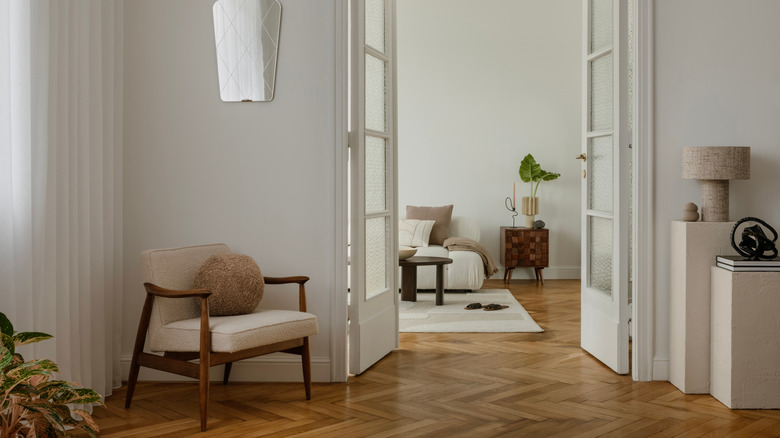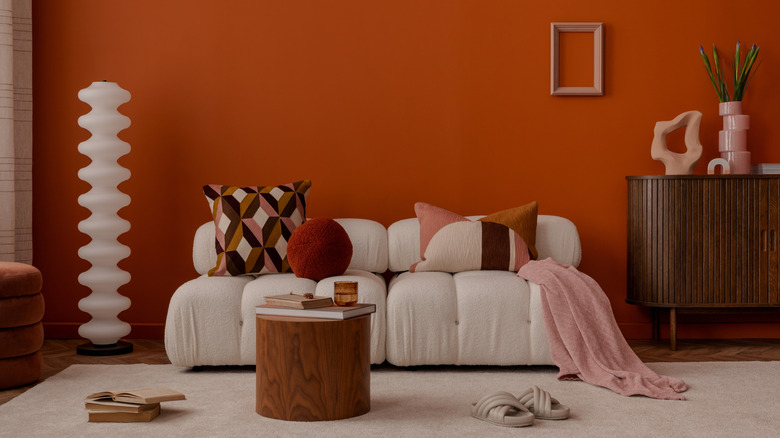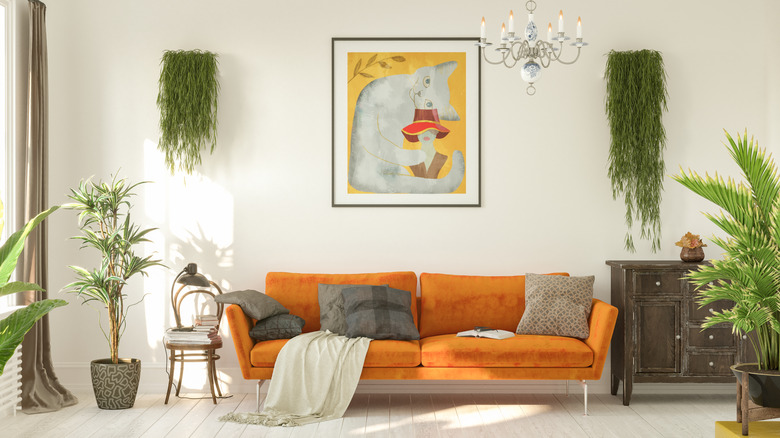The Latest Design Style Trend To Try If Your Mid Century Modern Home Craves Color
For years, the minimalist aesthetic — often paired with mid-century modern decor — has dominated design trends. Homes bathed in white or neutral shades and furnished with simple, clean-lined pieces in calming colors, have been found everywhere from city apartments to suburban houses. While minimalism will never go out of style completely, there has been a shift, as people increasingly look to add pops of color and personality to their decor. If your mid-century modern home craves color, one design style you may want to try is postmodernism. In an exclusive interview with House Digest, Erika Dale, a professional interior designer at Erika Dale Design, says blending in postmodern elements is a great way to add fun pieces and playful pops of color to your space.
Postmodernism is an eclectic style that pulls elements from various eras and cultures — and is a sharp contrast to functional design and muted colors which have been popular in recent years. The style, which made its way onto the design scene in the 1970s before establishing itself as a defining style of the '80s, embraces a bold, colorful, and playful aesthetic that adds vibrant energy and visual impact to a space. According to Dale, who is a great guide on post modern decor, the trend has returned as more people are looking to spice up their spaces. "This era in decor is all about playing with daring silhouettes and colors, pushing the envelope to create memorable spaces."
Add postmodern pops through colorful pieces in fun forms
Erica Dale exclusively told House Digest that one way to incorporate some edgy, postmodern pops is through seating. "One of the quintessential ways to showcase the hallmark pops of color that postmodern interior design is known for is to bring in vibrant seating, specifically in unique and unexpected shapes." She adds, "side or occasional chairs is a fantastic way to do this in a balanced way."
In addition to seating, you can introduce color to a mid-century modern space through other decor items and accent pieces. "I also love to feature pops of color on small side tables, light fixtures, art pieces, gallery walls, and textiles or drapery," Dale says. When choosing which colors to incorporate, any bright hue will add a playful element, however, the colors that are most commonly featured in postmodern palettes include avocado green, mustard, burnt orange, and turquoise. If you're looking for a more dramatic impact, you can bring in color through large-scale upholstered pieces, by painting the walls a bold hue, or by creating a trendy accent wall to bring your home to life.
Avoid going overboard with too many colors
When it comes to adding color to your space, Erika Dale cautions that it's important to not go overboard. "The goal is to experiment with unique color palettes and combinations for the edgy effect, while still avoiding all-out technicolor," she said in an interview with House Digest. To avoid overwhelming the room, Dale advises introducing bold hues more subtly — through decor items or accent furniture — rather than flooding the entire space.
If you want to add a bit of postmodernism to your home but don't want to break the bank buying expensive pieces, there are plenty of places to find affordable, vintage items to help you achieve the look you want. Thrift stores and sites such as eBay, Etsy, or Facebook Marketplace (an ultimate furniture-shopping tool), are great places to find vintage decor and accent furniture, according to Dale. She also recommends checking out online retailer Wayfair for reproduction furniture, and Article, CB2, West Elm, and World Market for colorful accent pieces and décor.


